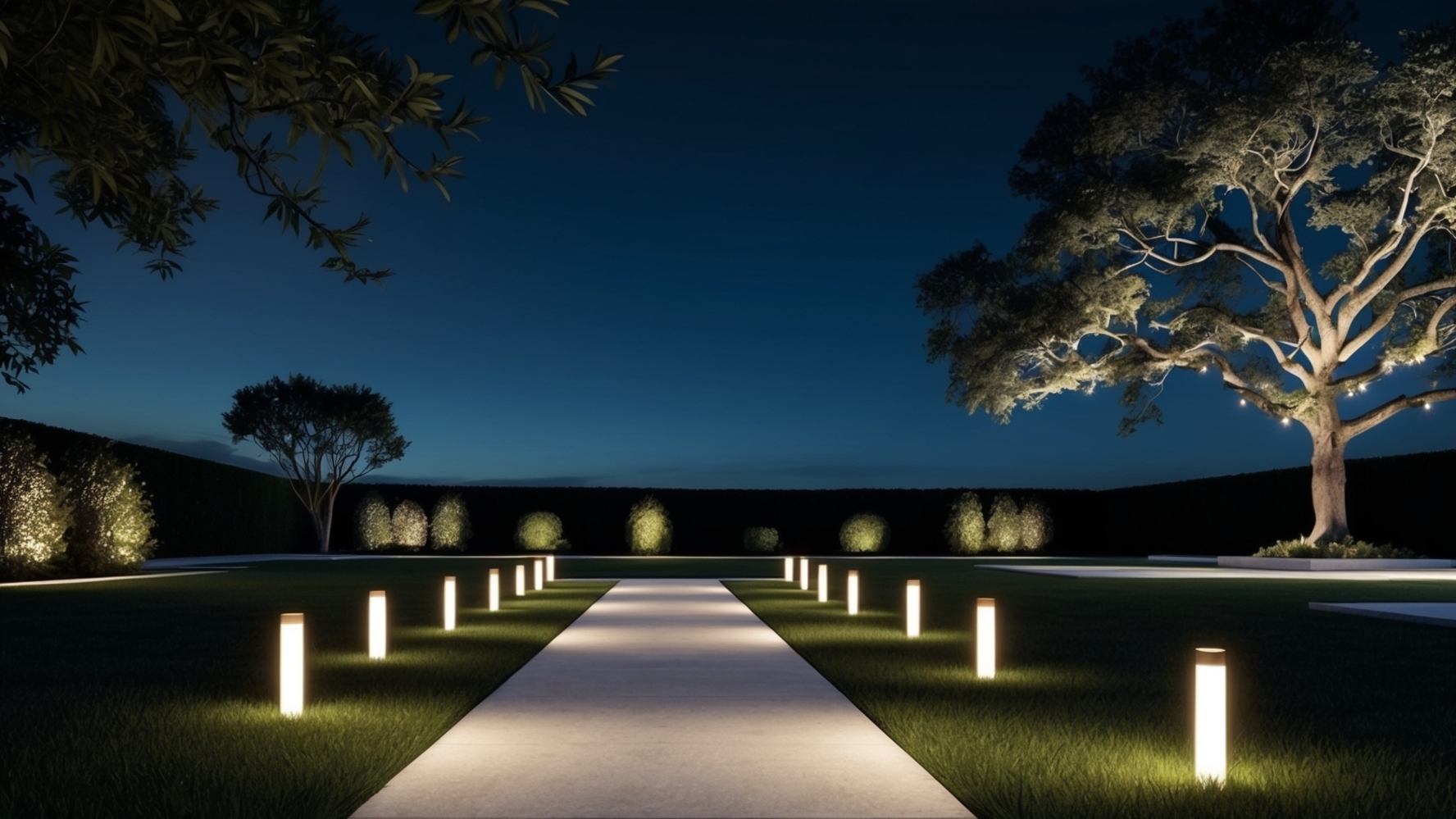Outdoor and landscape lighting plays a vital role in enhancing the aesthetics, security, and functionality of outdoor spaces. LED technology has become a game-changer in this field, offering numerous advantages over traditional lighting solutions. From energy efficiency to customizable designs, LED lights are revolutionizing how we illuminate outdoor areas. This article explores various LED solutions for outdoor and landscape lighting, highlighting their benefits and applications.
Energy Efficiency and Cost Savings
One of the primary benefits of LED lighting for outdoor and landscape applications is its energy efficiency. LEDs consume significantly less power compared to traditional incandescent or halogen bulbs, translating into lower electricity bills and reduced environmental impact.
Reduced Energy Consumption
LED lights use up to 80% less energy than incandescent bulbs and up to 50% less than halogen lamps. This energy efficiency is particularly advantageous for outdoor lighting, where fixtures are often left on for extended periods. By switching to LED lights, homeowners and businesses can achieve substantial energy savings while maintaining effective illumination.
Long Lifespan
LED lights have an extended lifespan, often exceeding 50,000 hours of use. This durability reduces the frequency of replacements and maintenance, leading to further cost savings. The long lifespan of LEDs ensures consistent performance over time and minimizes disruptions in outdoor lighting.
Enhanced Durability and Weather Resistance
Outdoor and landscape lighting must withstand various environmental conditions, including rain, snow, and extreme temperatures. LED lights are designed to be highly durable and weather-resistant, making them suitable for diverse outdoor settings.
Weatherproof Construction
Many LED outdoor lights are built with weatherproof enclosures and materials that protect against moisture, dust, and corrosion. This weather resistance ensures that LED fixtures remain functional and reliable, even in harsh weather conditions. Whether used in garden paths, driveways, or pool areas, LED lights can endure exposure to the elements.
Impact Resistance
LED lights are solid-state devices with no fragile filaments or glass components, making them more resistant to physical impacts and vibrations. This robustness is beneficial for outdoor settings where fixtures may be exposed to accidental knocks or bumps.
Versatility in Design and Application
LED technology offers a wide range of design options and applications for outdoor and landscape lighting. From accent lighting to security illumination, LEDs can be customized to suit various needs and preferences.
Pathway and Step Lighting
LED lights are commonly used to illuminate pathways, steps, and driveways, providing both functional lighting and aesthetic appeal. Low-voltage LED fixtures, such as stake lights and bollard lights, are ideal for guiding pedestrians safely and creating inviting outdoor spaces. These lights can be installed along walkways, staircases, and garden borders to enhance visibility and curb appeal.
Accent and Uplighting
Accent lighting with LEDs can highlight architectural features, trees, and garden elements, creating visually striking effects. Uplighting is particularly effective for illuminating the trunks of trees or the facades of buildings, adding depth and drama to outdoor settings. Adjustable LED spotlights and floodlights allow for precise control of light direction and intensity.
Deck and Patio Lighting
LED lights can be integrated into decks, patios, and outdoor living areas to provide both functional and decorative illumination. Recessed LED fixtures, step lights, and strip lights are commonly used to enhance the ambiance and usability of outdoor spaces. These lights can create a cozy and inviting atmosphere for evening gatherings and relaxation.
Smart Lighting Solutions
Smart LED lighting solutions offer advanced control and customization options for outdoor and landscape lighting. By integrating LED lights with smart technology, users can achieve greater convenience and flexibility.
Remote Control and Automation
Smart LED lights can be controlled remotely via smartphone apps, allowing users to adjust brightness, color, and scheduling from anywhere. Automation features enable users to program lighting schedules, create scenes, and set timers to suit their preferences and daily routines. This level of control enhances both functionality and energy efficiency.
Integration with Home Automation Systems
LED outdoor lights can be integrated with home automation systems and voice assistants, such as Amazon Alexa or Google Assistant. This integration allows for voice control and seamless coordination with other smart home devices. For example, users can create custom lighting scenarios that align with security settings or outdoor events.
Environmental Impact and Sustainability
The environmental benefits of LED lighting extend beyond energy efficiency and cost savings. LEDs contribute to sustainability efforts by reducing waste and supporting eco-friendly practices. Beyond outdoor and landscape lighting, LED lights in horticulture contribute to sustainable practices by providing energy-efficient lighting solutions that support plant growth while minimizing energy consumption.
Reduced Light Pollution
LED lights can be designed to minimize light pollution, which is a growing concern in urban areas. By directing light precisely where it is needed and reducing unnecessary glare, LEDs help preserve the natural night sky and improve the quality of life for residents. Outdoor LED fixtures can be equipped with shields and adjustable lenses to control light distribution effectively.
Recyclability and Low Toxicity
LED lights are generally more environmentally friendly than traditional lighting options. They contain no hazardous materials such as mercury and are fully recyclable. This makes them a more sustainable choice for outdoor lighting, contributing to reduced environmental impact and promoting responsible disposal practices.
Conclusion: Illuminating the Outdoors with LEDs
LED lighting solutions have revolutionized outdoor and landscape illumination by offering energy efficiency, durability, and versatility. Whether enhancing the aesthetics of a garden, improving safety on pathways, or integrating with smart home systems, LEDs provide innovative and practical solutions for a wide range of applications. As technology continues to advance, LED lights will play an increasingly important role in creating beautiful, functional, and sustainable outdoor spaces.
